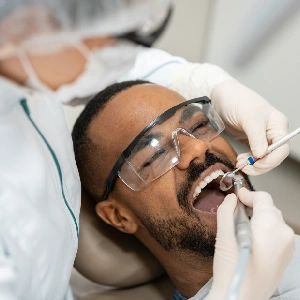An underbite, clinically known as Class III malocclusion, occurs when the lower teeth extend beyond the upper teeth. This misalignment not only affects appearance but also impacts chewing, speaking, and overall dental health. When it comes to fixing an underbite, timing is everything. Choosing the right age for treatment can make correction easier and more effective.
At Centers for Dental Implants, we often receive the question: “What is the best age to fix underbite?” Let’s dive deep into the ideal timelines, treatment options, and considerations for underbite correction.

Why Early Treatment Matters?
In many cases, addressing an underbite early can reduce the need for invasive treatments later in life. Early intervention can guide jaw growth and tooth alignment before the bones fully develop and harden.
Benefits of Early Treatment
- Prevents worsening of the bite as the child grows
- Guides proper jaw development
- Improves facial symmetry and aesthetics
- Reduces the risk of tooth wear, gum disease, and jaw joint problems
- Minimizes emotional and social discomfort
Best Age to Fix Underbite in Children
The American Association of Orthodontists recommends that children have their first orthodontic evaluation by age 7. At this stage, a child’s jaw is still growing, which offers a unique window of opportunity to correct misalignments effectively.
Age 7-12: Phase I Treatment (Interceptive Orthodontics)
- Ideal for Mild to Moderate Underbites: Appliances like palatal expanders or reverse-pull headgear can gently shift the jaw and teeth into proper alignment.
- Jawbone is still malleable: Easier to modify jaw growth and prevent severe issues later.
- Better compliance: Younger children adapt more easily to appliances.
Signs That Early Treatment Is Needed
- Protruding lower jaw
- Crossbite symptoms
- Difficulty biting and chewing
- Speech issues
Best Age to Fix Underbite in Teens
If early intervention is missed, the teenage years are the next best time for correction.
Age 12-16: Phase II Treatment (Comprehensive Orthodontics)
- Permanent teeth are in place: Braces and other orthodontic treatments can now fully align teeth and correct the bite.
- Jaw growth is still ongoing: Though slower than childhood, some adjustments can still be made.
- Aesthetic and social concerns: Teens often desire an improved smile and better facial balance.
Treatment Options
- Braces (Traditional or Ceramic)
- Elastics (Rubber bands to adjust bite)
- Clear aligners (in mild cases)
Possible orthognathic surgery for severe underbites after growth is complete
Best Age to Fix Underbite in Adults
While treating underbites in adults is more complex, it is never too late to seek help.
Age 18 and Above
- Bones are fully developed: Jaw growth has stopped, so orthodontic correction alone may not be sufficient for severe underbites.
- Combination treatments are common: Braces paired with jaw surgery (orthognathic surgery) may be needed to reposition the jaw.
- Mild underbites: Can still be corrected using orthodontic methods such as braces or clear aligners.
Advantages of Adult Treatment
- Improved oral function and aesthetics
- Relief from TMJ discomfort and bite issues
- Boosted self-esteem and confidence
Comparing Treatment by Age
Age Group |
Best Approach |
Ease of Treatment |
| 7-12 (Children) | Growth modification devices | Easier and more effective |
| 12-16 (Teens) | Braces, elastics, and possibly surgery later | Moderately easy |
| 18+ (Adults) | Braces + Surgery for severe cases | More complex and costly |
Why Timing Is So Important?
Correcting underbites early reduces treatment time, cost, and complexity. Once jaw growth is complete, correcting the skeletal issue becomes harder and may require invasive procedures.
Early Intervention Can
- Avoid surgery in many cases
- Support healthy jaw and facial growth.
- Minimize the emotional impact of having a visibly misaligned bite
Trust Centers for Dental Implants for Underbite Correction
Whether your child is just starting to show signs of an underbite or you are an adult finally seeking correction, Centers for Dental Implants is here to help. Our experienced team offers personalized care plans tailored to your age and needs.
Book your consultation today at one of our three Florida clinics: Aventura, Hallandale Beach, or Pembroke Pines to discover the best path to a healthier, more balanced smile.
FAQs
Is there a perfect age to fix an underbite?
Ideally, between the ages of 7 and 12, during early jaw growth. However, effective treatment is available for teens and adults as well.
Can an underbite correct itself?
In very mild cases during early childhood, yes. However, most underbites require orthodontic intervention to correct.
Is surgery always needed for adult underbite correction?
Not always. Mild to moderate underbites in adults can often be corrected with braces or aligners. Severe cases may need surgery.
Will fixing my underbite improve my facial appearance?
Yes. Correcting the bite improves facial harmony, jawline definition, and overall aesthetics.

